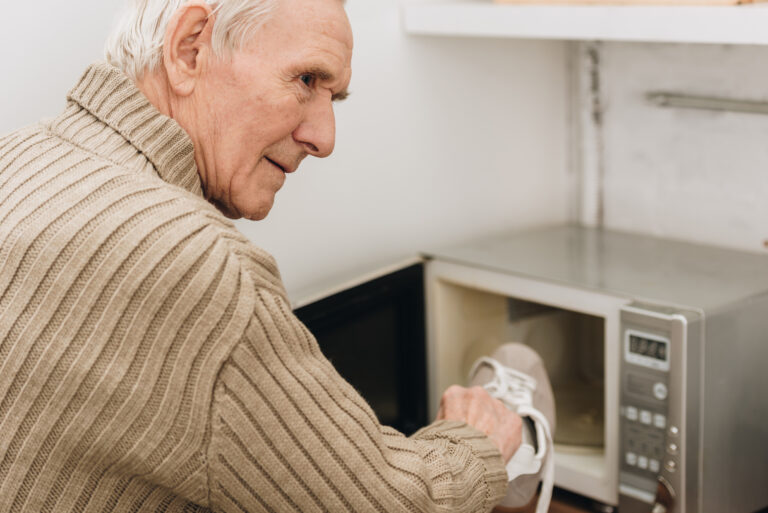Alzheimer’s is a progressive disease that affects the brain and causes memory loss, confusion, and difficulty with daily tasks. One of the most challenging aspects of caring for a person with Alzheimer’s is helping them with everyday activities, such as eating. As the disease progresses, individuals may struggle to use utensils or remember how to eat, leading to frustration and difficulty in maintaining proper nutrition. Fortunately, there are various eating aids available that can help make mealtimes easier for both the person with Alzheimer’s and their caregiver. In this article, we will discuss some ways to help a person with Alzheimer’s use eating aids effectively.
1. Understand the Challenges
Before introducing any eating aids, it is essential to understand the specific challenges the person with Alzheimer’s is facing. Every individual with Alzheimer’s is unique, and their difficulties with eating may vary. Some common challenges include difficulty gripping utensils, forgetting how to use them, or having trouble remembering when or how much to eat. By identifying their specific struggles, you can select the most appropriate eating aid to help them.
2. Choose Appropriate Eating Aids
There is a wide range of eating aids available in the market, from simple to more complex devices. It is crucial to select an appropriate one based on the person’s abilities and preferences. Some popular options include weighted utensils, angled utensils, and utensils with larger handles for easier gripping. For individuals who have difficulty remembering when to eat, automatic feeding devices or reminder clocks may be helpful. It is essential to involve the person with Alzheimer’s in the decision-making process to ensure they feel comfortable and empowered.
3. Introduce One Aid at a Time
Introducing too many eating aids at once can be overwhelming for a person with Alzheimer’s. It is best to start with one aid and give them time to get used to it before adding another. Start by showing them how to use the aid and then observe as they try it out. If they are struggling, provide gentle reminders or assistance. Once they have mastered one aid, you can introduce another, gradually building up their confidence and ability to use them.
4. Simplify the Environment
Individuals with Alzheimer’s may become easily distracted during mealtimes, leading to difficulties with eating. To create a more conducive environment, minimize distractions by turning off the television or radio. Ensure the dining area is well-lit and comfortable. It may also be helpful to place a picture or reminder of how to use the eating aids on the table to serve as a visual cue.
5. Be Patient and Encouraging
Individuals with Alzheimer’s may become easily frustrated and agitated when learning to use new eating aids. It is essential to be patient and understanding, providing gentle reminders and encouragement. Praise their efforts and celebrate small successes to boost their confidence and motivation. Avoid criticizing or scolding them if they struggle, as this can cause further distress and hinder their progress.
6. Consider Occupational Therapy
If you are struggling to find the right eating aids or techniques to help a person with Alzheimer’s, consider seeking assistance from an occupational therapist. They specialize in helping individuals with physical or cognitive difficulties perform everyday tasks more independently. They can provide customized recommendations and training for specific eating aids based on the person’s abilities and needs.
In conclusion, caring for a person with Alzheimer’s can be challenging, especially when it comes to helping them with daily tasks like eating. However, with the right approach and use of appropriate eating aids, mealtimes can become more manageable and enjoyable for both the individual and their caregiver. Remember to understand their challenges, introduce aids gradually, simplify the environment, be patient and encouraging, and seek help from professionals if needed. With these tips, you can make a significant difference in helping a person with Alzheimer’s maintain proper nutrition and improve their overall quality of life.





